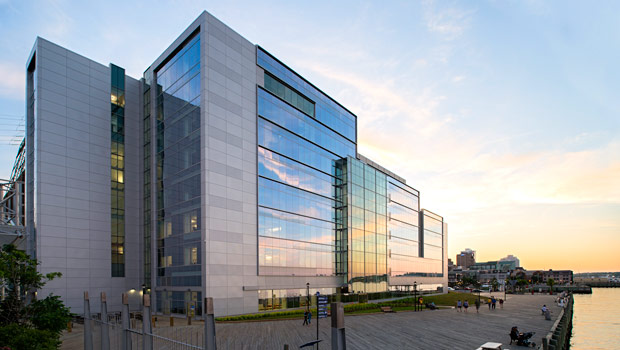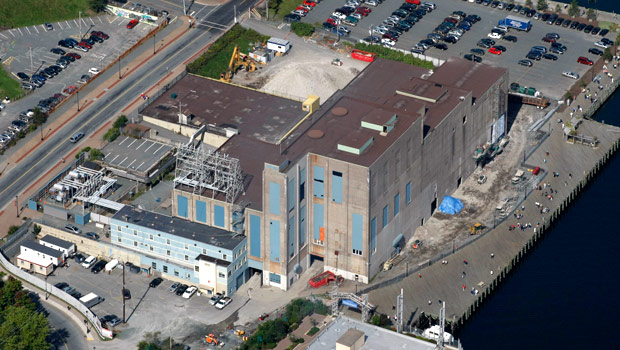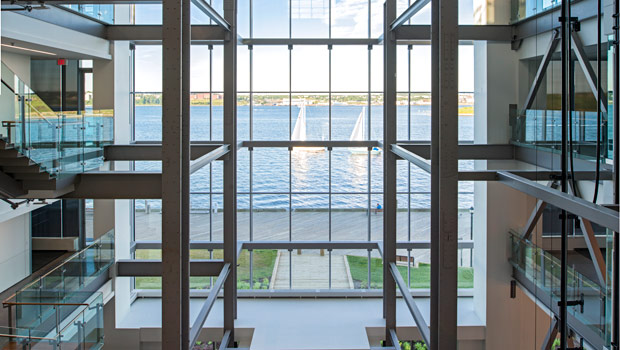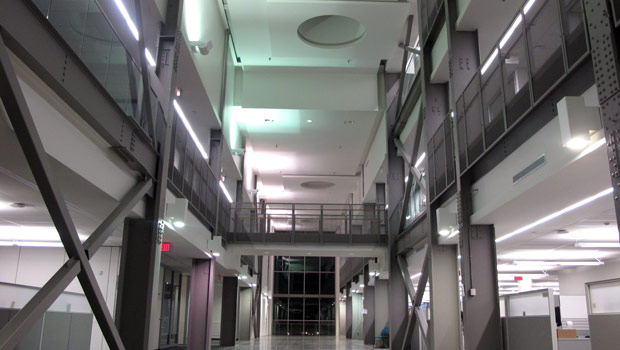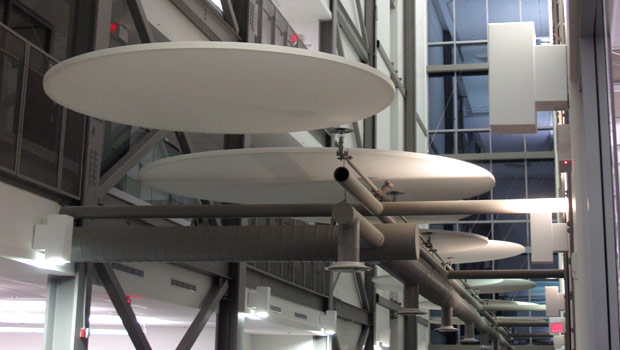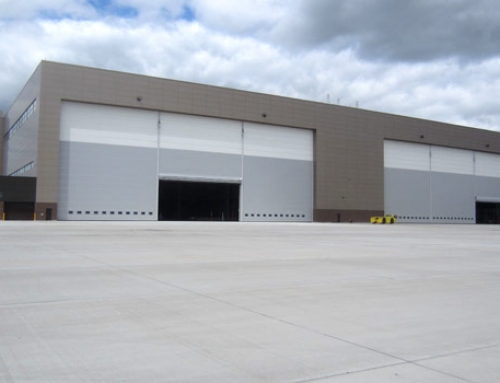Project Description
The Nova Scotia Power Corporate Headquarters site occupies a prominent location in downtown Halifax, with significant frontage on the public boardwalk that lines the western edge of Halifax harbour. The project involved the retention and adaptive reuse of a former power generating plant to become the headquarters for the provincial electrical utility. The facility houses over 500 staff in approximately 18,000 gross square metres and provides parking for 150 cars. The project used an innovative construction strategy that involved the reuse of the existing steel structure and exterior concrete cladding, in conjunction with the insertion of floors within the existing volume. Originally designed to support coal bins and turbines, the structure and foundations were robust enough to support the new floors.
The main public entrance on Lower Water Street, leads into a five-storey atrium that connects the neighbourhood to the waterfront, offering spectacular views of the harbour. A secondary axis in the form of a two-to-four-storey galleria provides an interior street that parallels the boardwalk for the entire length of the building. These public spaces and the openness of views they provide, promote casual interaction between employees. Glazed inter-floor stairs on the building perimeter, and exterior balconies at the atrium, keep users in contact with the harbour. In a gesture to the memory of the building’s initial use the original steel structure has been retained and featured. Skylights sit in the base of former chimney stacks along the roof of the galleria. The former power plant, previously considered an eye sore in the local community has become an attractive downtown landmark for all citizens. The project is the starting point of Halifax’s boardwalk, and provides employees and the public, access to the harbour.
The building is the first in Atlantic Canada to achieve the Leadership in Energy and Environmental Design (LEED) Platinum certification. This designation was received from the Canada Green Building Council and is one of the nation’s most well-recognized certifications in green building design and construction. Some of the unique features of the building include:
• Harbour heat pumps use water straight from the Halifax harbour for heating and cooling purposes.
• Over 75% of occupied spaces have access to daylight, with occupancy and daylight sensors used throughout the building to reduce or eliminate unnecessary lighting.
• Rain water is collected and re-cycled for use in and around the building.
Structural steel was the obvious choice for this construction as the existing columns within the space were steel making the connection of the new floors to the existing columns less challenging. Ribbons of steel were cut from the existing structural members and they were tested in a laboratory to determine the tensile strength of the existing steel. Since large portions of the original concrete exterior walls were removed to create windows, doors and louvres, a brand new structural steel lateral load resisting system was introduced within the building. In addition some of the original concrete which was to remain became unstable during demolition and it was tied to the steel frame using steel straps and anchors.
The largest challenge in this project was the installation of the new floors within the existing shell. All new floor levels were installed simultaneously starting at one end of the building and moving laterally along the building because the cranes used were inside the existing building during erection and the building roof was existing which greatly limited crane swings. At the south end of the building as many as seven new floor levels were constructed within the existing shell.
Project Team
Owner: Nova Scotia Power Incorporated
Architect: WZMH
Structural Engineer: BMR Structural Engineering Limited
Fabricator: Marid Industries Ltd.

